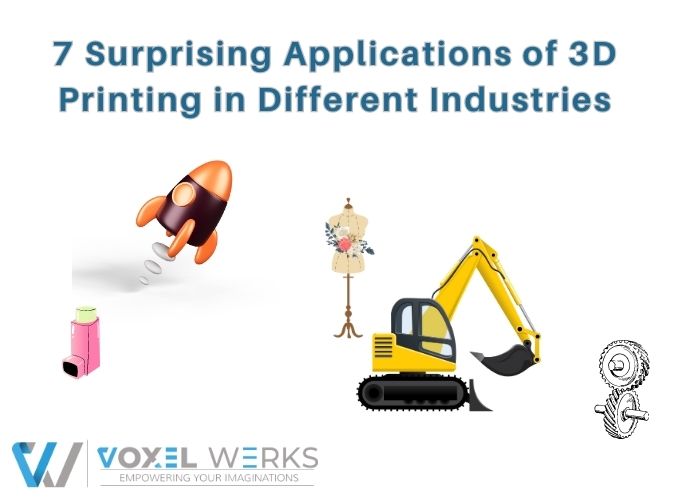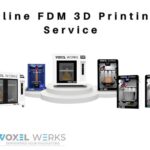Three-dimensional (3D) printing, also known as additive manufacturing, is a rapidly growing technology that has the potential to revolutionize many industries. It involves the creation of three-dimensional objects by layering materials on top of each other based on a 3D computer-aided design (CAD) model. With the advancements in 3D printing technology, a range of industries have started incorporating it into their operations. In this blog, we will discuss some of the applications of 3D printing in different industries.
Applications of 3D Printing In Healthcare Industry:
The healthcare industry has been one of the major adopters of 3D printing technology. It is used in the production of prosthetics, implants, and surgical instruments. 3D printing has enabled the customization of medical devices for individual patients, leading to better outcomes. For example, doctors can now create patient-specific surgical guides and implants that fit perfectly, leading to shorter surgical times, faster recovery, and better overall outcomes.
Applications of 3D Printing In Aerospace Industry:
The aerospace industry has also been quick to adopt 3D printing technology. It is being used to produce lightweight components for aircraft, reducing weight and improving fuel efficiency. 3D printing also enables the creation of complex shapes and designs that would be difficult to produce using traditional manufacturing methods. In addition, it allows for rapid prototyping, enabling engineers to test designs quickly and make modifications as needed.
Applications of 3D Printing In Automotive Industry:
The automotive industry has also started using 3D printing technology in various applications. One of the most significant applications is in the production of prototypes and parts. With 3D printing, engineers can produce prototypes quickly and cost-effectively, enabling them to test designs and make modifications before committing to full-scale production. 3D printing is also being used to produce complex parts, such as engine components, that would be difficult or impossible to produce using traditional manufacturing methods.
Applications of 3D Printing In Fashion Industry:
The fashion industry has started using 3D printing technology to produce customized designs and accessories. 3D printing allows for the creation of intricate and complex designs that would be difficult to produce using traditional manufacturing methods. It also enables designers to create customized accessories and jewelry for individual customers.
Applications of 3D Printing In Construction Industry:
The construction industry has started using 3D printing technology to produce building components and structures. With 3D printing, construction companies can produce complex designs and shapes quickly and cost-effectively. 3D printing is also being used to produce customized building components, such as molds and forms, that fit specific requirements.
Applications of 3D Printing In Education Industry:
The education industry has started using 3D printing technology to enhance learning experiences. 3D printing allows students to create physical models of their designs, enabling them to better understand concepts and visualize their ideas. It also enables educators to create customized teaching aids and models that fit specific lesson plans.
Applications of 3D Printing In Food Industry:
The food industry has started using 3D printing technology to create unique and customized food designs. 3D printing allows chefs to create intricate and complex food designs that would be difficult to produce using traditional methods. It also enables the creation of customized food designs for individual customers, such as personalized cakes or chocolates.
In conclusion, 3D printing has the potential to revolutionize many industries by enabling customization, rapid prototyping, and the production of complex shapes and designs. As the technology continues to evolve, we can expect to see even more applications in various industries.


